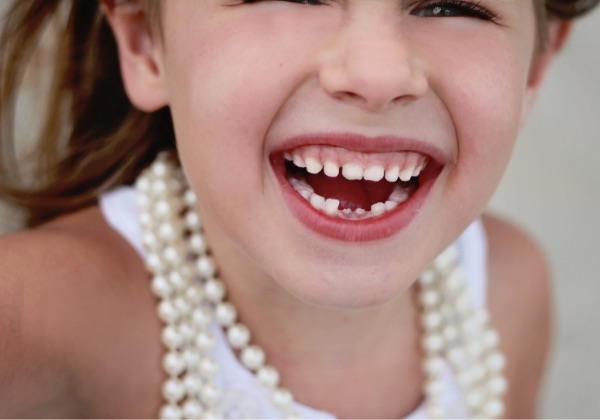It’s important to start caring for bub’s teeth long before they appear, not only will it teach kids how to look after their own teeth properly, you’ll be setting them up for a lifetime of healthy sparkling smiles. Our friends at Maven Dental in Cronulla, have put together a handy list of hints and tips on where to start and what to expect in order to keep those pearly whites gleaming and healthy.
START EARLY
Great oral health begins well before teeth appear. Once a day following one of bub’s feeding times use a clean damp, soft cloth (face washer, gauze), wrapped around your finger, to gently wipe clean your baby’s gums.
Also start to familiarise your baby/toddler with drinking water. Be sure to cool the water after boiling it, so that it is sterilised, and avoid adding fruit juice or other flavourings. Juice contains additives that are high in sugar and acid which can stimulate the bacteria in your child’s saliva and cause it to pool in their mouth – this can lead to early childhood dental decay.
Important Tip! If your baby has a dummy, avoid putting it in your mouth. The bacteria that causes tooth decay can easily be transferred to your baby’s mouth.
FIRST BITE
Babies’ teeth start to erupt at around 6-9 months of age. This varies greatly from person to person; some children can start teething as early as 3 months or as late as 12 months. Typically, by the time your toddler is 3 years old all 20 deciduous teeth (milk teeth) should be present, with 10 upper teeth and 10 lower teeth.
TEETHING RELIEF
A cold, wet face washer is a great, cost-effective option. If you choose a teething ring, make sure it is solid so that it can be put in the fridge and easily sterilised. It’s important to check the packaging to check it is BPA free.
When it comes to using pain relief, a sugar-free option is best. Try introducing a drinking cup, with milk or water, at around 6 months old and hopefully by the age of 1 year old, a bottle will be a thing of the past.
BRUSHING BABY’S TEETH
Once the first tooth has erupted it’s time to introduce your baby to the toothbrush. Hopefully by now they will be familiar with having their gums wiped and will adapt to the use of a small soft toothbrush.
Using only water on the toothbrush, gently brush the tooth/teeth using small circular motions. Brush the surface of the tooth up to where it meets the gum twice a day (after breakfast and after the last feed at night or bedtime). You might find you baby feels more secure if you cradle him/her whilst you practise their oral health care routine.
Just like your own toothbrush, make sure to replace your baby’s toothbrush every three months. If it helps to remember, change it with every season.
TOOTHPASTE FOR TODDLERS
The use of toothpaste is normally introduced at about 18 months old. When it comes time to buying toothpaste choose a children’s toothpaste – it’s lower in fluoride and is milder in taste. Your child might still find it difficult to spit which means they may swallow tiny amounts of toothpaste. By using children’s toothpaste, it won’t cause them any harm if it is swallowed. Keep encouraging them to spit out any excess left behind.
If possible, avoid choosing a flavour that is sweet or fruity and ensure you only use a pea size amount on the toothbrush. In addition to brushing, start to familiarise your child with flossing once they have two or more teeth.
Help your kids play an active role in their oral health care routine by making this task fun. Create a game or play their favourite song for two minutes, even try brushing your teeth at the same time.
IN THE DENTIST’S CHAIR
Begin visits to the dentist early! To encourage a positive relationship with the dentist start familiarising your child by taking them along to your own dental appointments. They may choose to sit on your lap or become more acquainted with the dental environment. Even encourage them to have their own teeth looked at, normally by the age of 1 year old.
Other times at which your child should visit the dentist is if you notice any of the following changes:
- White, mottled patches along the gum line
- Brown areas
- Red, puffy or bleeding gums
- A change in the colour of a tooth if they aren’t teething (could be a result of trauma (knock, accident or bump)
- Discharge from around a tooth
- Bad breath
Hopefully this information has provided some great insights in how you can best care for your baby’s teeth. It’s important for children to develop a positive attitude towards oral health from a young age to ensure their teeth will last a lifetime. It’s never too early to adopt great oral hygiene habits. For more information on any of the above, you can contact reach out to your local dentist:
MAVEN DENTAL CRONULLA
Suite 1, 29-31 Croydon Street, Cronulla, NSW, 2230
P: 02 9527 0544
E: [email protected]
Website
